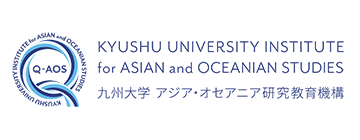Satellite Session 3:Materials Science and Engineering
Wednesday, September 9, 2020 *Online
| 13:00 | Opening | Prof. Yongsok Seo |
| 13:05 | Chemical Modification of Single-walled Carbon Nanotubes for Near Infrared Photoluminescence Nanomaterial Fabrication | Assoc. prof. Tomohiro Shiraki |
| 13:30 | A Multi-scale Approach for Predicting Mechanical Properties of Metals under Mechanical-thermal-metallurgical Processes | Prof. Myoung-Gyu Lee |
| 13:55 | Head-to-Tail Carbazole Derivatives as Photonic and Electronic Materials | Assoc. prof. Ken Albrecht |
| 14:20 | Visible-light Driven RAFT Polymerization | Asst Prof. Min Sang Kwon |
| 14:45 | Break | |
| 15:00 | Efficient Organic Photonic Devices by Manipulating Triplet Excited States | Asst Prof. Ken-ichi Goushi |
| 15:25 | Ion-to-Ion Amplification through an Open Junction Ionic Diode | Assoc. prof. Jeong-Yun Sun |
| 15:50 | Development of Homogeneous Plastic Antibodies; Well-defined Polymer Ligands that Bind and Neutralize Toxicity of Target Peptide | Assoc. prof. Yu Hoshino |
| 16:15 | Bioresorbable Electronics for Minimally Invasive Medical Sensing and Treatment of Nervous System | Asst Prof. Seung-Kyun Kang |
| 16:40 | Closing | Prof. Atsushi Takahara |
Speakers

Prof. Yongsok Seo
Seoul National University
Dept. of Materials Science & Engineering
Professor
Email: ysseo@snu.ac.kr

Prof. Atsushi Takahara
Kyushu University
Institute for Materials Chemistry and Engineering
Professor
Email:takahara@cstf.kyushu-u.ac.jp

Assoc.prof. Tomohiro Shiraki
Kyushu University
Department of Applied Chemistry
Associate Professor
Email: shiraki.tomohiro.992@m.kyushu-u.ac.jp
Chemical Modification of Single-walled Carbon Nanotubes for Near Infrared Photoluminescence Nanomaterial Fabrication
Carbon nanotubes (CNTs) are promising nanomaterials due to their remarkable electronic, optical, mechanical and thermal properties. Especially, single-walled CNTs (SWNTs) with semiconducting features emit photoluminescence (PL) in near infrared (NIR) regions. The NIR PL appears by a radiative relaxation process of the exciton produced by photoexcitation of the tubes. The unique one-dimensional nanostructures allow the exciton to be stable even at room temperature and to migrate through the one-dimensional structures. As a new method to utilize the mobile excitons for PL enhancement, defect doping to SWNTs by local chemical functionalization has recently been developed. The locally functionalized SWNTs (lf-SWNTs) show additional PL (E11*) with red-shifted wavelengths and enhanced quantum yields compared to original PL (E11) of pristine (non-modified) SWNTs. Therein, the local functionalization of the tubes creates emissive sites whose electronic structures are modified, giving narrower bandgaps and exciton trapping features. Interestingly, the modified molecules on the doped sites of lf-SWNTs are found to versatilely modulate their NIR PL properties. In this talk, our local chemical and supramolecular chemical approaches for lf-SWNT functionalization are presented, in which the wide-range of PL wavelength modulation and the dynamic wavelength shift/switching are achieved based on molecular chemistry.

Prof. Myoung-Gyu Lee
Seoul National University
Materials Science and Engineering
Professor
Email: myounglee@snu.ac.kr
A multi-scale approach for predicting mechanical properties of metals under mechanical-thermal-metallurgical processes
A multiscale approach coupling the crystal plasticity (CP) finite element simulation and the phase-field modeling (PFM) is proposed to predict mechanical properties of steels after a cold rolling process followed by the annealing heat treatment. In the proposed simulations, the grain sale deformation of a polycrystalline metal by rolling and the subsequent microstructure evolutions with texture change during static recrystallization (or annealing) can be efficiently and accurately modeled. The virtual microstructure obtained after the two processes is applied to the prediction of mechanical properties such as yield function, hardening law and formability under different loading paths. In detail, a three dimensional representative volume element (RVE) is employed to represent the microstructure in the CP simulations, and the inhomogeneous nucleation and growth of deformed crystals are implemented into the PFM simulations. The results show that the coupled multiscale simulation can be a predictable tool for estimating the mechanical properties of metallic materials in the material design stage which commonly involves thermal, mechanical, and metallurgical processes.

Assoc. prof. Ken Albrecht
Kyushu University
Institute for Materials Chemistry and Engineering
Associate Professor
Email: albrecht@cm.kyushu-u.ac.jp
Head-to-Tail Carbazole Derivatives as Photonic and Electronic Materials
Carbazole dendrimers and oligomers that consist of head-to-tail molecular structure shows unique electronic structure, i.e., intramolecular potential gradient which is favorable as photonic and electronic materials.
The development of emitting materials for OLEDs has started with fluorescence, moved to phosphorescence, and recently reached TADF. The important design principle of a TADF material is to spatially separate the HOMO and LUMO, because this reduces the difference in the singlet and triplet energy level. Carbazole dendrimers have the LUMO at the inner layer, and the HOMO at the outer-layer. Attachment of an acceptor can further separate the HOMO and LUMO and this molecule showed efficient TADF. These TADF dendrimers can be used as efficient solution-processable emitting-layer in OLEDs.
Since the proposition of single molecular electronics in 1970’s, development of single molecule diode was a great target. Thus, several single molecule diodes have been reported. However, design of diode based on the pure orbital deformation mechanism was not yet achieved. I will demonstrate that head-to-tail carbazole oligomer is the first example of single molecule diode that operates based on this novel mechanism.

Asst. Prof. Min Sang Kwon
Seoul National University
Materials Science and Engineering
Assistant Professor
Email: minsang@snu.ac.kr
Visible-light Driven RAFT Polymerization
Photomediated-RAFT has recently received great attention due to its unique features such as oxygen tolerance, excellent monomer compatibility, and applicability to the synthesis of high molecular weight polymers. In this talk, I will summarize current development of photomediated-RAFT polymerization and also introduce our approaches for visible-light driven RAFT polymerizations.

Asst. Prof. Kenichi Goushi
Kyushu University
Applied Chemistry
Assistant Professor
Email: goushi@opera.kyushu-u.ac.jp
Efficient organic photonic devices by manipulating triplet excited states
Organic electronics have attracted significant attention as alternative and complementary technologies of inorganic semiconductors. Organic light-emitting diodes (OLEDs), which are one of the typical devices, have been widely used in practical applications such as high-resolution flexible displays and solid-state lighting with low-power consumption. Also, organic semiconductor laser diodes (OSLDs), which is recently demonstrated in our research group, would provide new applications due to the flexibility of color tuning based on the freedom of molecular design. To utilize efficient electroluminescence (EL) and stimulated emission in these devices, the engineering of molecular excited states is crucial important. The molecular excited states are classified into (spin-) singlet and triplet excited states. In electrical excitations, the triplet excited states are formed with the high probability, which is equivalent to three-quarters, and generally non-emissive excited states. The accumulation of triplet excited states often disturbs laser action. Therefore, triplet managements are key factor for improving the performances of organic photonic devices. In this presentation, I address our recent progress in the improving OLED and OSLD performances by triplet managements, respectively.

Assoc. prof. Jeong-Yun Sun
Seoul National University
Department of Materials Science and Engineering
Associate Professor
Email: jysun@snu.ac.kr
Ion-to-Ion Amplification through an Open Junction Ionic Diode
As biological signals are mainly based on ion transport, the differences in signal carriers have become a major issue for the intimate communication between electrical devices and biological areas. In this respect, an ionic device which can directly interpret ionic signals from biological systems needs to be designed. Particularly, it is also required to amplify the ionic signals for the effective signal processing since the amount of ions acquired from biological systems is very small. In this study, we report on the signal amplification in ionic systems as well as sensing through the modified design of polyelectrolyte hydrogel based ionic diodes. By designing an open junction structure, ionic signals from the external environment can be directly transmitted to an ionic diode. Moreover, the minute ionic signals injected to the devices and can also be amplified to a large amount of ions. The signal transduction mechanism of the ion-to-ion amplification is suggested and clearly verified by revealing the generation of breakdown ionic currents during an ion injection. Subsequently, various methods for enhancing the amplification are suggested.

Assoc. prof. Yu Hoshino
Kyushu University
Department of Chemical Engineering
Associate Professor
Email: yhoshino@chem-eng.kyushu-u.ac.jp
Development of homogeneous plastic antibodies; well-defined polymer ligands that bind and neutralize toxicity of target peptide.
Abiotic ligands that bind to specific biomolecules have attracted attention as substitutes for biomolecular ligands, such as antibodies and aptamers. Radical polymerization enables the production of robust polymeric ligands from inexpensive functional monomers. However, little has been reported about the production of monodispersed polymeric ligands. Herein, we present a route to create homogeneous ligands prepared via radical polymerization that recognize epitope sequences on a target peptide and neutralize the toxicity of the peptide. Taking advantage of controlled radical polymerization1), block-polymerization2) and separation3), a library of multifunctional oligomers with discrete numbers of functional groups was prepared4). Affinity screening revealed that the sequence specificity of the oligomer ligands strongly depended on the number of functional groups4). The process reported here will become a general step for the development of abiotic ligands that recognize specific peptide sequences.
- Lee, Y. Hoshino, Y. Wada, Y. Arata, A. Maruyama, Y. Miura, J. Am. Chem. Soc., 137, 10878-10881 (2015).
- Takimotom, S. Katakami, Y. Miura, Y. Hoshino. Mater. Adv., 1, 604-608 (2020).
- Hoshino, et al. J. Mater Chem. B.,8, 5597-5601 (2020).
- Y. Hoshino, et al. Angew. Chem. Intl. Ed., 59, 679-683 (2020).

Asst. Prof. Seung-Kyun Kang
Seoul National University
Department of Materials Science and Engineering
Assistant Professor
Email: kskg7227@snu.ac.kr
Bioresorbable Electronics for Minimally Invasive Medical Sensing and Treatment of Nervous System
Nanoscale thin-film technology has opened an era of soft, flexible and stretchable electronics and has also changed the timescale of dissolution of materials. Silicon nanomembranes of 10-100 nm thickness have dissolution behavior on the order of days to months. This feature lets us construct Si electronics for water-soluble and bioresorbable performance using unusual fabrication processes and combining soft/biodegradable polymers. Here we introduce two representative examples of bioresorbable Si electronic devices useful in monitoring and modulating the nervous system. First, a bioresorbable pressure sensor using piezoresistive Si strain gauge and 3D microstructured diaphragm was demonstrated to provide accurate measurement of intracranial pressure during the incubation period of traumatic injury. Wireless interfaces made of polymer-coated bioresorbable metal strips offer stable and continuous pressure monitoring. In-vivo functional and immunochemical demonstrations in a rat model suggests the potential validation of bioresorbable sensors in the clinical stage. In the other example, bioresorbable wireless electrical stimulator interfacing the peripheral nerve was demonstrated as a therapeutic modulator. An integrated circuit of Si diode, capacitor, and inductor with all-biodegradable metal, semiconductor and dielectric materials generate therapeutic electrical pulses by near-field inductive energy transfer. The accelerated functional recovery of transected nerve with electrical stimulation suggests the capability of bioresorbable stimulator to promote and/or modulate the nervous system in the treatment and rehabilitation stage.












